Panama to Costa Rica Border Crossing: The Complete Guide (2024)
It’s possible to cross the Panama to Costa Rica border by land, and a lot cheaper than flying! Since we are backpacking overland through South and Central America, we decided to complete the Panama to Costa Rica border crossing on a series of buses and shuttles. The journey went smoothly but did have a lot of steps, which is why I’m sharing a full guide here.
There are three main locations to cross the Panama to Costa Rica border: 1) Paso Canoas in the west, 2) Rio Sereno in the center, and 3) Guabito in the east. Before our border crossing, I couldn’t find much information on any of the border crossing online, particularly from the direction of Panama to Costa Rica (more people seem to travel Costa Rica to Panama).
This guide includes information on all border crossing locations, as well as a detailed step-by-step guide to our experience at Paso Canoas.
NOTE | I completed this border crossing in 2023 and have updated this post for 2024. I will do my best to keep this article updated. If you find this guide helpful, please comment below with any changes or updates! Together, we can help future travelers navigate the Panama to Costa Rica border safely.
Check out my other border crossing guides…
Costa Rica to Nicaragua Border Crossing Guide
Nicaragua to El Salvador Border Crossing Guide
El Salvador to Guatemala Border Crossing Guide
Guatemala to Honduras Border Crossing Guide
Honduras to Guatemala Border Crossing Guide
Guatemala to Belize Border Crossing Guide
Belize to Mexico Border Crossing Guide
Ecuador to Colombia Border Crossing Guide
Peru to Ecuador Border Crossing Guide
Sailing the San Blas Islands to Cross From Colombia to Panama (Coming Soon!)
Panama to Costa Rica Border Crossing Locations
As I mentioned, there are three main places to cross from Panama to Costa Rica and vice versa.
The main Panama to Costa Rica border crossing locations are:
- Paso Canoas: The western-most border crossing along the Pan American Highway. This is what we did and is one of the most busy border crossings in Central America due to commercial traffic. Most people cross in cars so if you go by foot, you won’t have to wait long at all.
- Guabito: The eastern-most border crossing that connects popular travel destinations Bocas del Toro (in Panama) and Puerto Viejo (in Costa Rica). This one is less busy than Paso Canoas but arguably the more popular among backpackers.
- Rio Sereno: The central border crossing that is most remote and least popular.
Of course, there are some other locations, as well. However, they are less trafficked and don’t have as good public transport infrastructure. If you are traveling by bus like we were, then the first two are pretty much your only options!
TIME DIFFERENCE | It’s really important to know for this border crossing that Panama is one hour ahead of Costa Rica. For example, when it is 1pm in Panama it is 12pm in Costa Rica. This is actually a good thing for crossing in the direction Panama – Costa Rica because it essentially gives you an extra hour!
Panama to Costa Rica Border Crossing: The Complete Guide
Below are some brief details on the three main Panama to Costa Rica border crossing locations: Paso Canoas, Guabito, and Rio Sereno.
How the Paso Canoas Border Crossing Works
The Paso Canoas border crossing is what we did, and I have a very detailed step-by-step guide to it if you scroll down!
In order to complete the Paso Canoas border cossing, you’ll need to follow this route:
- Get to David bus station (we traveled from Boquete – I’ve included instructions below)
- Bus David – Paso Canoas
- Exit Panama, Enter Costa Rica
- Get cash out (optional but recommended)
- Bus Paso Canoas – Ciudad Neily
- Onward travel from Ciudad Neily
→ Departure and Arrival Destinations
The Paso Canoas border crossing is for you if you plan to visit Costa Rica’s western Pacific coast side. You can easily cross from Panama City, Boquete (what we did), and David, Panama into Costa Rican destinations like Uvita, Dominical, Manuel Antonio, Osa Peninsula, and San Jose.
How the Guabito Border Crossing Works
The Guabito border crossing is located along the eastern Caribbean coast and, although we did not cross here ourselves, I have heard it is more popular among backpacker travelers. This is not because the border has great infrastructure (it doesn’t), but rather because Bocas del Toro (in Panama) and Puerto Viejo (in Costa Rica) are such popular destinations among backpackers.
The result is that travelers outnumber immigration officials here and the line is often quite long. On the flip side, this is considered a very safe border! This is a useful guide to the Guabito border crossing by some of my favorite travel bloggers.
→ Departure and Arrival Destinations
The Guabito border crossing is for you if you plan to visit Costa Rica’s eastern Caribbean coast side. The most popular departure places in Panama are Bocas del Toro, David, and Panama City, to cross into Puerto Viejo, Costa Rica.
How the Rio Sereno Border Crossing Works
The Rio Sereno border crossing is in the center of the Panama – Costa Rica border in a mountainous area. It’s the most remote and therefore least busy of these three border crossing locations.
Because it’s so remote, this border is best done by those who have access to a car. I personally could not find directions with public transport, so wouldn’t recommend this one to backpackers. This is a useful guide if you have a private car, but keep in mind it’s pretty outdated (2016).
→ Departure and Arrival Destinations
Because this border is located in the center, you could feasibly depart from tourist locales of either Bocas del Toro or Boquete. In either case, you’ll need to first get to David to get on a bus, though. In Costa Rica, your first destination is the small town of San Vito.
What Documents Do You Need for the Panama to Costa Rica Border Crossing?
Before you cross into Costa Rica, you should also be prepared with some important items and pre-booked details.
These travel requirements include:
- Proof of onward travel: You NEED to have proof of onward travel (AKA, travel booked out of Costa Rica within 90 days) in order to enter Costa Rica. Of course, as backpackers we didn’t know exactly when we’d be leaving Costa Rica and where we’d be leaving to! We had trouble buying bus tickets online that were refundable. So, we booked a flight through Copa Airlines from San Jose to Panama City. We used the “price hold” feature so didn’t have to pay a cent. The reservation is held for 24 hours (we timed it to cross the border during this period). After that, if you don’t pay, the reservation is canceled. We heard about this trick from other travelers and it worked perfectly for us!
- Pre-booked accommodation in Costa Rica: As a rule of thumb, always have accommodation booked in the country you’re entering, even if you’re not totally sure you’ll stay there. Border officials often ask for your address in the country! We booked this cute (and relatively cheap) beach hostel in Dominical and it was great. (We only stayed here for one night before moving on to this 100% gluten free hotel in Dominical – tip for my fellow celiac travelers!).
- Six-months passport validity: It’s always good to have a minimum of six months of passport validity and at least two empty passport pages before you cross any international border. Some countries turn you away without this.
- Check entry requirements: It’s different for every nationality, so check on your government website. Currently, USA and UK citizens can enter Costa Rica visa-free for 90 days.
- Check health requirements: As you probably know, things are constantly changing regarding COVID-19 travel rules. Currently, there are NO health requirements to enter Costa Rica. You should check your country’s embassy page for the most reliable information.
Below, I explain all of the border crossing steps in detail, as well as our personal experience crossing the Panama Costa Rica border.
Panama to Costa Rica Border Crossing at Paso Canoas: The Complete Guide
This border crossing has quite a few steps and can seem pretty complicated if you’re not keeping track. Below I’m sharing our step-by-step guide from our starting point in Boquete, Panama to our ending point in Dominical, Costa Rica!
Note that we crossed the border in the cheapest way possible, which also was the most complicated. There is another option in which you take a bus from David, Panama all the way through to San Jose, Costa Rica. Scroll down for more details on that option!
HOURS | Note that the Paso Canoas border is NOT open 24 hours a day. It is not possible to cross at night (not that I’d recommend it anyway). The current hours of operation are Monday-Friday 6am-10pm and Saturday and Sunday 6am-8pm.
1. Get to David Bus Station
Your first step for the Panama to Costa Rica border crossing is to get yourself to the bus station in David, Panama (“terminales David” on Google Maps).
From Boquete
We were traveling from Boquete, a small town in the highlands full of hikes, waterfalls, coffee farms and… American retiree expats. Chances are, you’ll be visiting there, too!
From Boquete, we went to the bus station which is really just a wooden stall where the reconverted school bus parks in the road. To find it, type “bus stop for David” into Google Maps. It is on the corner of Av. Belisario Porras and Calle 4a Sur.
The bus leaves from Boquete to David hourly and should take about 45 minutes to an hour. For us, it left at 8:50am and took one hour. We didn’t buy any tickets ahead of time – just paid $1.75 each at the end of the ride!
From Panama City
If you want to travel to Costa Rica from Panama City, then you first need to get to David. And the bad news is you will have to do this either as an overnight bus or spend one night in David, because it is too long a journey to travel in one day AND cross the border during daylight.
The bus from Panama City to David leaves from the Albrook Mall terminal. When we did this, we took the night bus which leaves at 10pm, 11pm, or 12am and takes about 7 hours (they will tell you 5 hours, though) and costs $18/person including tax. You can only buy tickets at the station on the same day as your journey. During daytime the bus leaves about every 40 minutes.
It is also possible to fly from Panama City to David, but honestly flights are quite expensive and so I’d just use your budget to fly into Costa Rica, instead!
Cost: $1.75 USD per person
Time: 1 hour
2. Bus from David to Paso Canoas
From David bus station, you will need to get on another bus to Paso Canoas / Frontera. Paso Canoas is the name of the town by the border, and “Frontera” literally means “border” in Spanish.
You will see lots of white shuttle buses with both Paso Canoas and Frontera written on the windshields. These buses leave approximately every 15 minutes so don’t worry about a bus schedule.
We arrived to David bus station around 9:50am from Boquete. Once in the big parking lot of buses we saw tons of men yelling the names of destinations. We just followed the ones yelling “Paso Canoas” and “Frontera” and got on a bus within just a couple minutes.
Our bus cost $3 each, and left at 10:05am. It took us nearly 1.5 hours to reach the border, but it was a loooong ride because we had to keep our big backpacks on our laps! There was nowhere to put them, and people were constantly getting on and off the bus so we couldn’t put them in the aisle.
We could’ve paid an extra fare for our bags to be in a seat but by the time the ticket guy offered us this it was halfway through the trip so we just sucked it up. Word to the wise, though – prepare for an uncomfortable ride!
Cost: $3 USD per person
Time: 1 hour 40 minutes
3. Exit Panama
Woohoo, you made it to the border! But… this is actually the part where it gets confusing. I will say that the Panama Costa Rica border did not feel sinister or unsafe to me, but it is a little hard to navigate.
You will immediately see that this isn’t a normal border with a sterile governmental building. No, there are tons of little shops, cafes, businesses, souvenir sellers, etc. It’s kind of like an incredibly chaotic version of Duty Free in the airport.
That’s all to say, that the most difficult part of this border crossing, for us at least, was actually finding the correct buildings to go to!
Your first step is to exit Panama and get your passport stamp. Look for the big white, red, and blue building that says “PANAMA” on it in colorful letters (pictured below).
Then, walk to the breezeway in the middle of this building and look for the door marked “MIGRACION” (also pictured below). Worst case scenario, just ask someone. We found that the people around here were quite helpful and not trying to scam us – still be alert, though.
Once inside Panama immigration, we gave over our passports, had our photos taken, and did fingerprints. We got our passports stamped and that was that! There was no line and the whole process took about 5 minutes.
Cost: $0
Time: 5 minutes
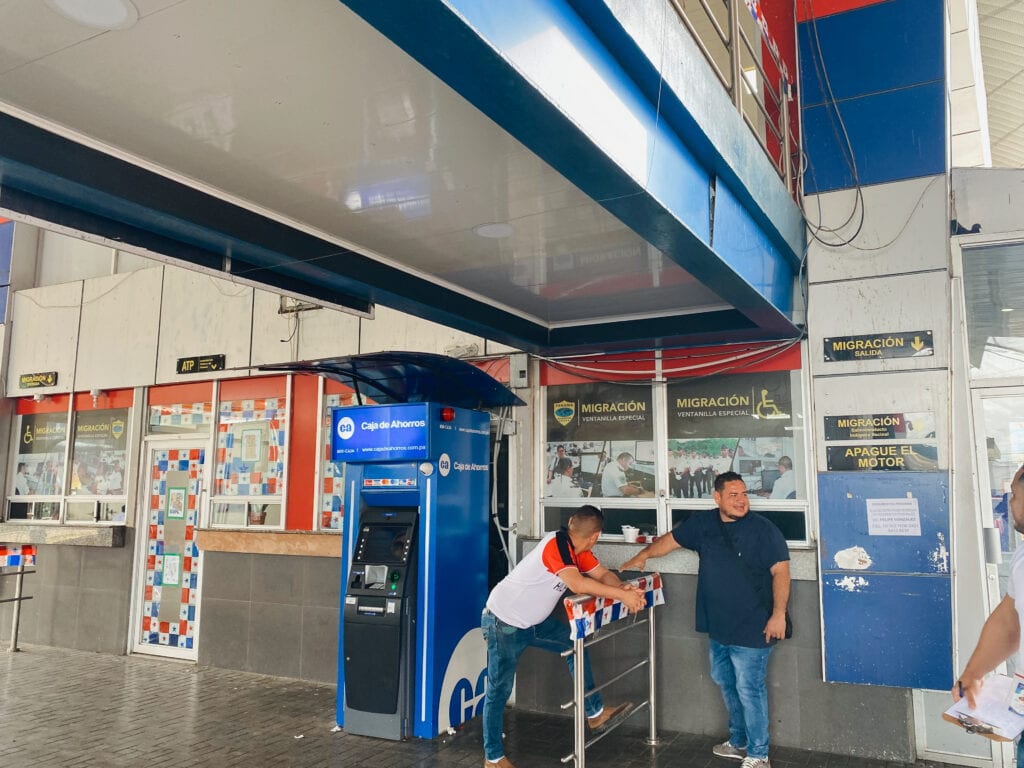
4. Enter Costa Rica
The next step is to enter Costa Rica and get your Costa Rica stamp.
However, this is when you have to walk through “no man’s land” through many restaurants, shops, taxi drivers, etc. Ceviche in no man’s land, anyone? Honestly, if you’re not paying attention here you could easily just hop in a taxi and never officially enter Costa Rica!
From the Panama immigration building, walk straight forward toward the yellow flashing traffic light in the far distance. The Costa Rica immigration building is to the right of this.
Notice that you’ll pass the bus station on your way (yes, the bus station is technically in no man’s land…).
The Costa Rica immigration building will be on your righthand side. It’s rather nondescript but has a sign that says “Bienvenidos Costa Rica” (see photo below). Around the side of this building there are stalls that say either “entradas / entrance” or “salidas / exit” Costa Rica.
Once here, it only took us a few minutes to show our passports and answer some questions, like how long we’d be in Costa Rica and where we were visiting. We weren’t even asked for proof of onward travel (although you should definitely still have this as it’s quite unusual not to be asked, I’ve heard).
Cost: $0
Time: 15 minutes
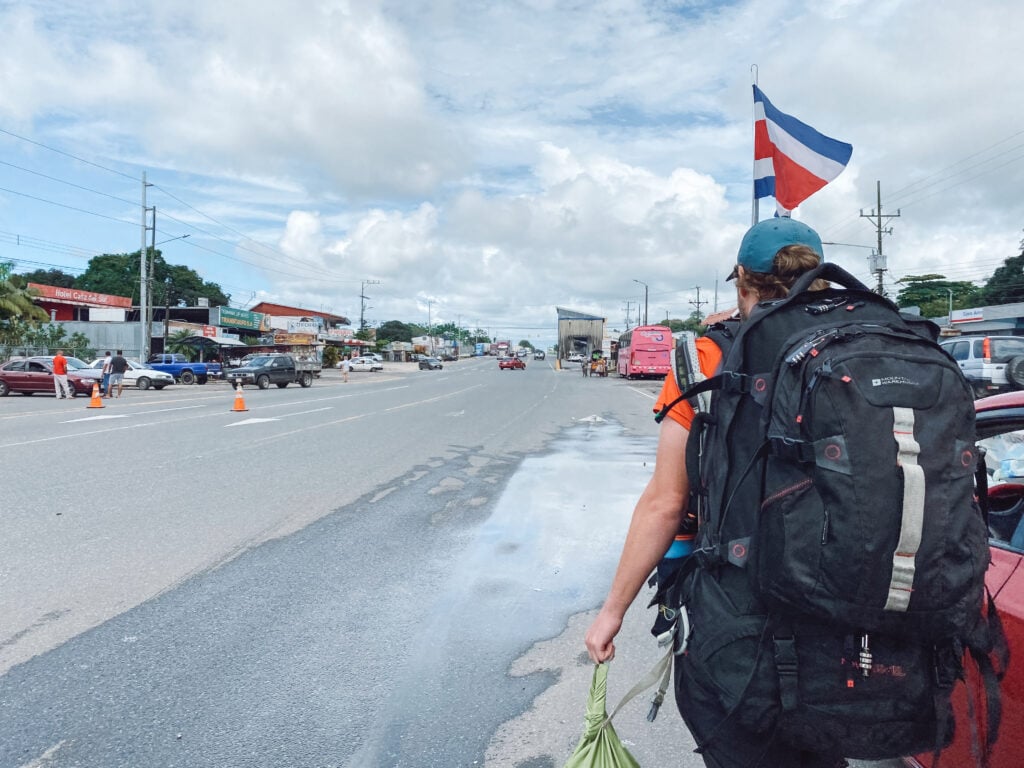
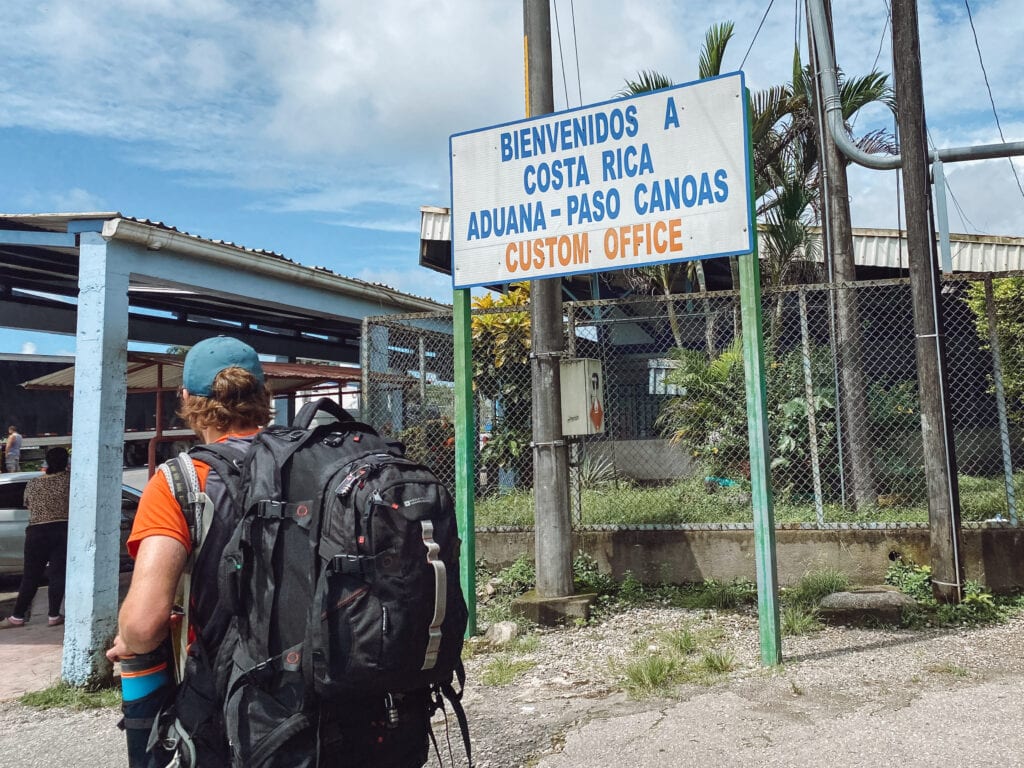
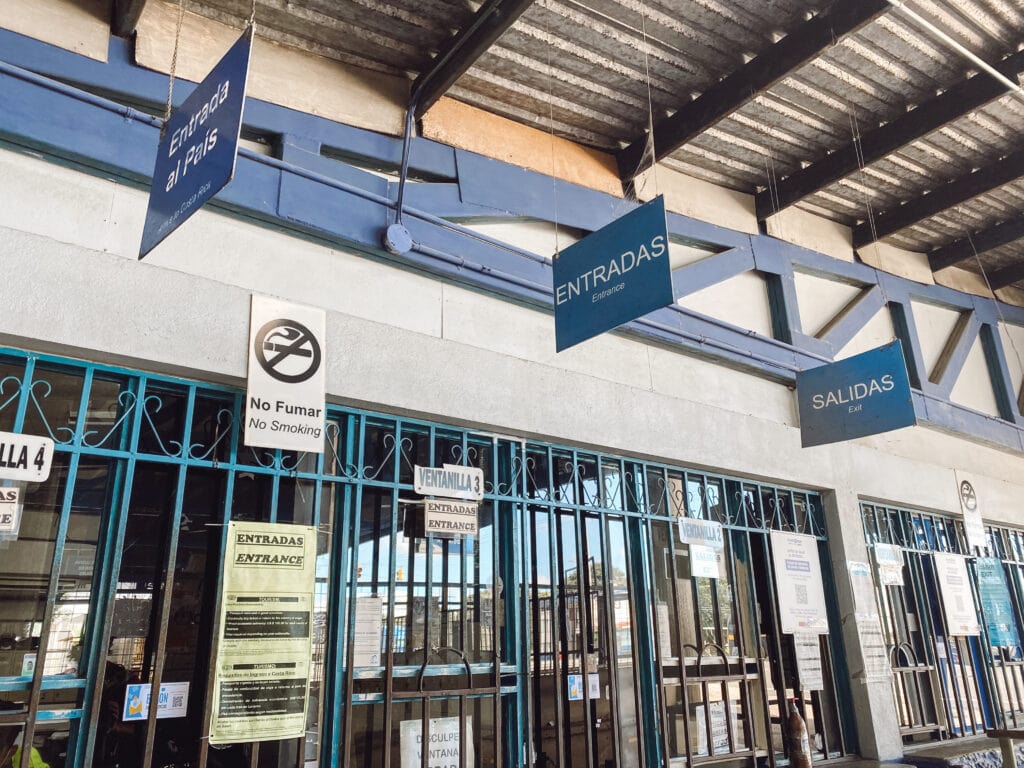
5. Get Cash Out (Optional – But Recommended)
Now you’ve officially entered Costa Rica! At this point, I highly recommend that you get some Costa Rican currency out (colones / CRC).
Do NOT exchange money with anyone who offers at this border. Instead, there is a very secure and free to use ATM. You have to walk back into no man’s land to the bus station and this is where the ATM is located (as you’re walking back in the direction of the Panama immigration building, the ATM will be on your lefthand side).
Be sure to know the exact exchange rate of the day (check here). We got out about 60,000 CRC / ~$100 USD and it was useful to have for the next week as we had trouble finding ATMs in some beach towns.
Note that you can pay in USD for buses at the border, and in a lot of places in Costa Rica, but you get charged more to pay in USD than in CRC.
Cost: $0 (no ATM surcharge!)
Time: 5 minutes
6. Bus from Paso Canoas to Ciudad Neily, Costa Rica
Now, you need to actually leave the border. There are two bus stations/stops in no man’s land. As you’re facing back toward the Panama immigration building, one station is on your lefthand side (where the ATM is located). The buses here are more expensive and go direct to San Jose.
On the opposite side of the road is another bus station (and a ceviche restaurant… exactly what you’re craving at a border crossing I’m sure?). The buses here go to Ciudad Neily.
Most people, us included, take the $1 USD bus from the Panama Costa Rica border to the nearby town of Ciudad Neily. This bus station has a lot more options for onward travel than you do directly from the border.
However, there is also a bus that travels directly from the border to San Jose, Costa Rica and you can hop on this at the border for $17. This bus actually starts back in David, Panama for $18 and is a good option if you just want convenience – scroll down to read more about this option in the “alternative route” section.
We decided to go the cheapest possible way which was to Ciudad Neily. These buses leave every 15-30 minutes from 5:30am to 6pm (see timetable photo below!). We paid for the bus with $1 USD and got some CRC in change.
The bus to Ciudad Neily left at about 12:05pm, which means we only spent 35 minutes at the Panama Costa Rica border! Fastest border crossing ever! It took 45 minutes and was very hot and crowded with lots of people getting on and off.
We arrived to Ciudad Neily at 12:50pm but… this was actually 11:50am because we went back an hour when we entered Costa Rica!
Cost: $1 USD per person
Time: 55 minutes (10 minutes waiting for bus, 45 minute bus journey)
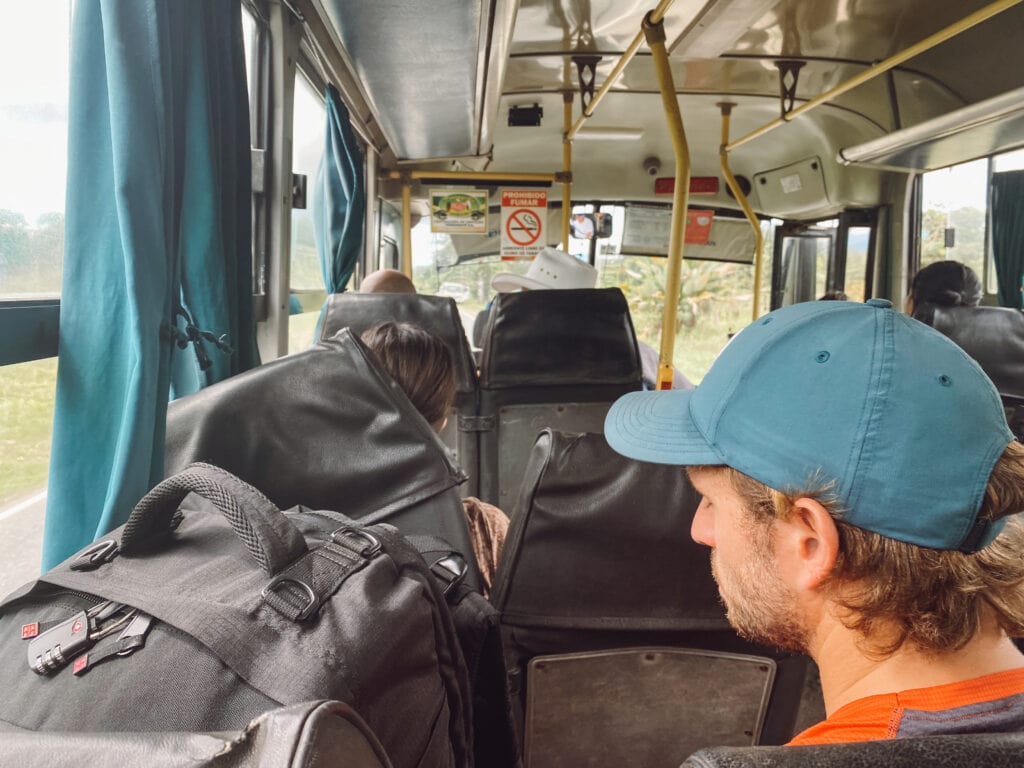
Onward Travel From the Panama Costa Rica Border
Now, where do you want to go in Costa Rica? You have a lot of options!
Personally, our first stop was Dominical, a small and peaceful surf town on the Pacific coast. We stayed here two nights. First, in this beachside hostel with extremely helpful staff, $10/day surfboard rentals, and cheap rates – by Costa Rica standards. Our second night, we splurged on this 100% gluten free hotel, which was my birthday present from Dan!
It’s easy to get from Ciudad Neily to Dominical because there is a direct bus for 4,775 CRC / ~$7.83 USD. See the current bus timetable in the photo below.
We took the 12:30pm bus to Dominical and it took about 3.5 hours with lots of stops to pick up and drop off passengers.
Keep in mind that the LAST bus of the day from Ciudad Neily to Dominical leaves at 3pm, so you need to start your border crossing early enough in the morning to account for delays in order to get this bus! Otherwise, you’re stranded.
Cost: 4,775 CRC / $7.83 USD per person
Time: 4 hours 10 minutes (40 minute wait at bus station + 3.5 hour bus journey)
Other options for onward travel from the Panama Costa Rica border include:
- Uvita: This is a very popular beach town, known for its whale-tail shaped beach, surfing, and waterfalls. It’s about 20 minutes south of Dominical, so just take the same bus to Dominical as we did and get off in Uvita.
- Jiminez: Want to visit the beautiful Osa Peninsula and Corcovado National Park? Take the direct bus to Jiminez. Only two buses leave per day so you will need to get the 2pm bus.
- Cortes: This town is near the Pacific Coast and a good stop for visiting the famous stone spheres and dolphin watching tours. Three buses leave per day – see the timetable below. You’ll likely have to take the 4:30pm or 5:45pm bus.
- Quepos / Manuel Antonio National Park: The most visited national park in Costa Rica, where you can see sloths, toucans, monkeys, and stunning beaches. We spent nearly a week here after Dominical. If you want to go directly here, get the bus to Dominical and then switch to the bus to Quepos. This bus leaves at 6:30am, 9:30am, 1pm, 3pm, and 4:30pm and takes about an hour. The Dominical-Quepos bus stop is at the restaurant El Coco in front of the Taco Del Mar and it doesn’t have any schedules posted; we got the schedule from our hostel in Dominical. From the Quepos bus station, just take a taxi to your accommodation near Manuel Antonio.
- San Jose: It’s possible to take the bus to San Jose, Costa Rica’s biggest city, although honestly I’d get this from the border or David, Panama instead; it costs more but you’ll save a lot of time and faff. The buses from Ciudad Neily to San Jose are run by the company Tracopa and are hot pink.
For more onward travel plans, Rome2Rio is my go-to free tool to figure out travel routes.
Alternative Route: Bus from David to San Jose
I’ve mentioned it a few times already, but there is an alternative route for the Panama to Costa Rica border crossing where you can avoid the multiple buses, shuttles, and waiting that we did. However, the trade off is it is a little more expensive (and less adventurous, if you care about that)l
Tracopa bus company runs buses directly from David, Panama to San Jose, Costa Rica. It costs $18 USD/person and the buses are air conditioned (and easily recognizable by their hot pink color!).
The bus leaves at 8:30am daily from David, but please check timetables on the Tracopa website for the most up to date information.
If your final destination isn’t San Jose, you can jump off earlier. Please confirm the exact route if you choose this option, but we did speak to multiple people who stated the bus passed through Uvita and Dominical.
Panama to Costa Rica Border Crossing Overview
Everyone’s border crossing experience is going to be different. This guide is based on our experience crossing at Paso Canoas on foot, when we had no lines and the whole thing only took 35 minutes! All in all, despite having so many steps, this was one of the easiest and cheapest border crossings we’ve done in South and Central America.
Total time: 4 hours (8 hours 10 minutes if you include onward travel from Ciudad Neilly to Dominical)
Total cost: $5.75 USD (not including onward travel from Ciudad Neilly to Dominical – that puts it at $13.58 USD)
IS THE DIRECT BUS WORTH IT? | Looking back now, I personally wish I’d spent the extra less than $5 USD just to take the direct Tracopa bus from David, Panama to San Jose, Costa Rica (and get off earlier at Dominical). Our border crossing was pretty easy, but I’d pay the extra $5 for the ease of not having to catch multiple very uncomfortable buses. To each their own!
Safety Tips for the Panama Costa Rica Border
This border crossing felt pretty safe to me, but it’s always good to be on guard. Below are some of the actions I recommend.
In order to remain safe at the Panama-Costa Rica border, here are a few tips:
- Leave early in the morning to give yourself plenty of daylight to complete the border crossing.
- Don’t cross the border at night.
- Always keep your eye on your bags on buses and don’t fall asleep. Tons of people are getting on and off and they can easily swipe your bag if you’re not paying attention.
- Stay up to date with border news on Panamanian and Costa Rican news websites. This is one of the safest border crossings in South and Central America but it doesn’t hurt to keep updated.
- Be sure to know the exchange rate for your bank’s currency into CRC.
- Keep your valuables (camera, phone, jewelry, wallet) either zipped away in your backpack or only use discreetly.
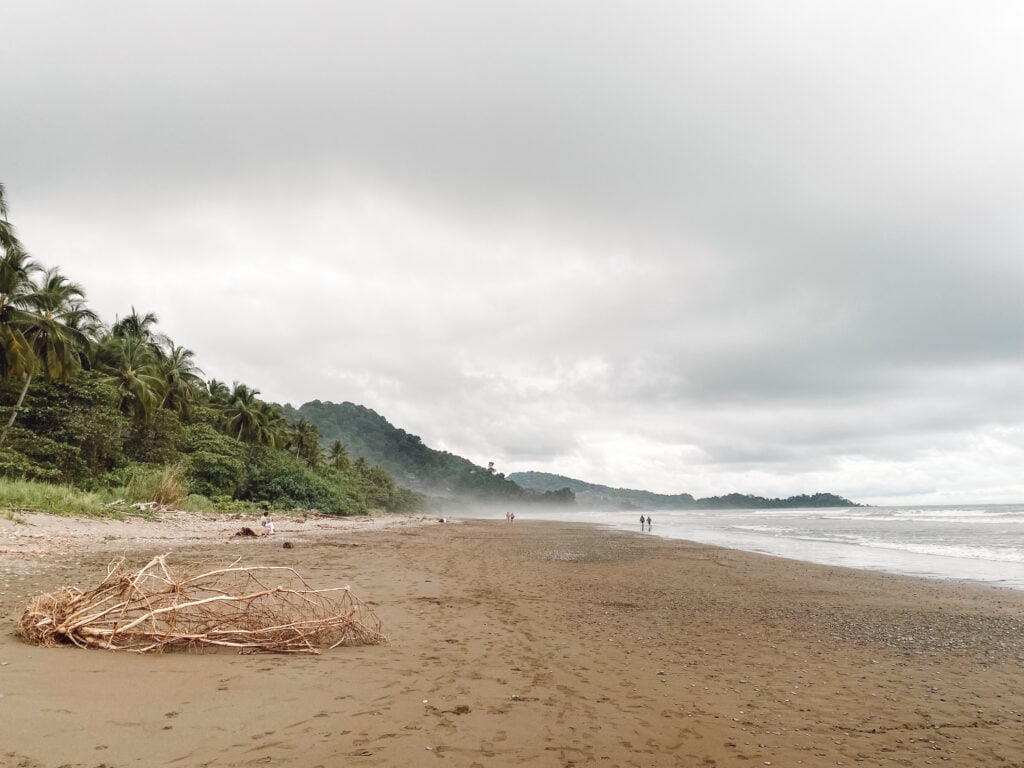
Final Thoughts on the Panama to Costa Rica Border Crossing
I really hope this guide was helpful to any fellow travelers attempting the Panama to Costa Rica border crossing! This border is relatively straightforward AS LONG AS you know what buildings to look for and where. Use the photos in the post above to help you find the correct immigration buildings!
If you find this guide helpful for your own border crossing journey, I’d really appreciate it if you leave a comment below. Let me know how your trip went, and any updates or changes from what I’ve written here. I will keep this blog post updated so it remains useful for all of us!



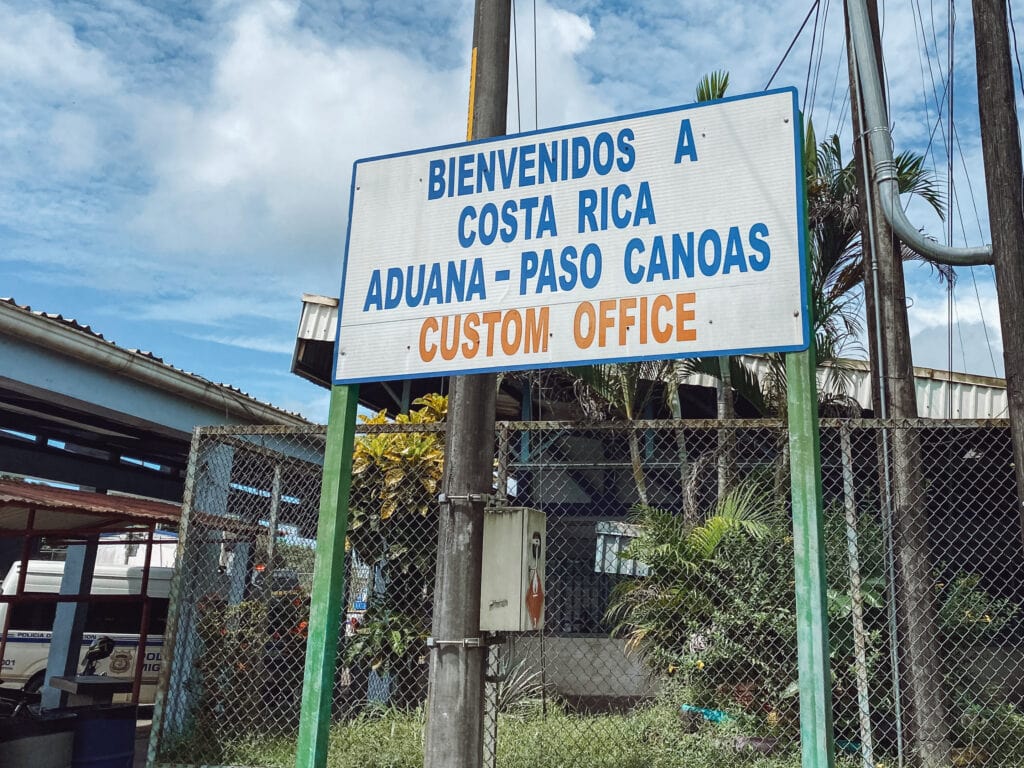
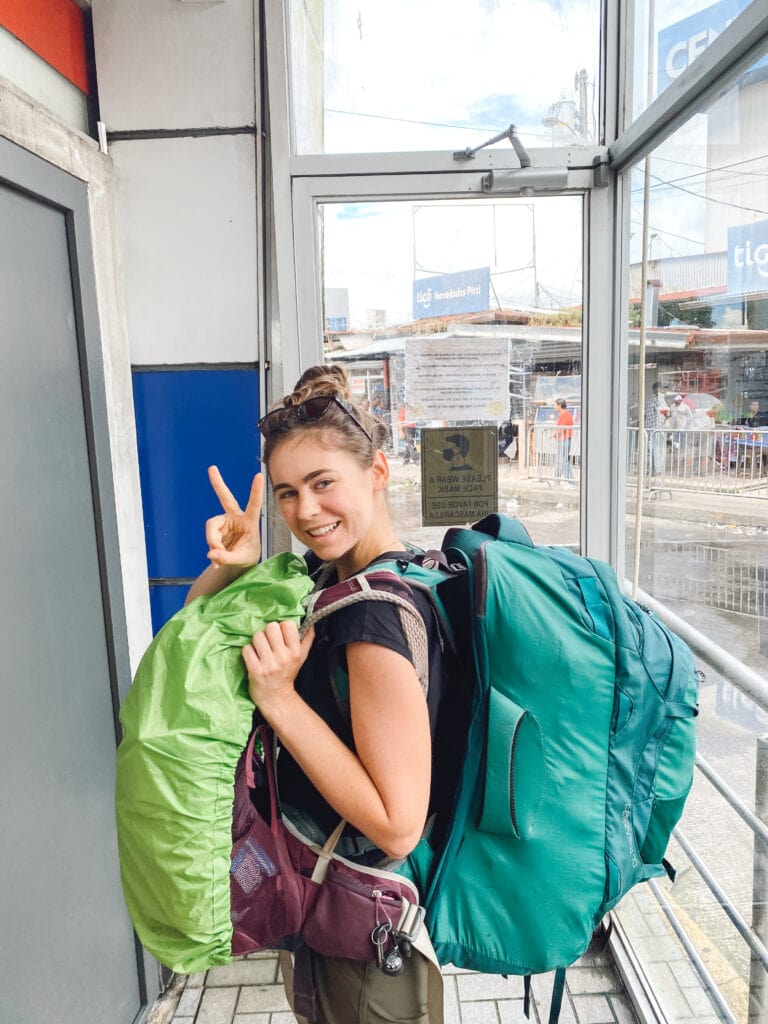
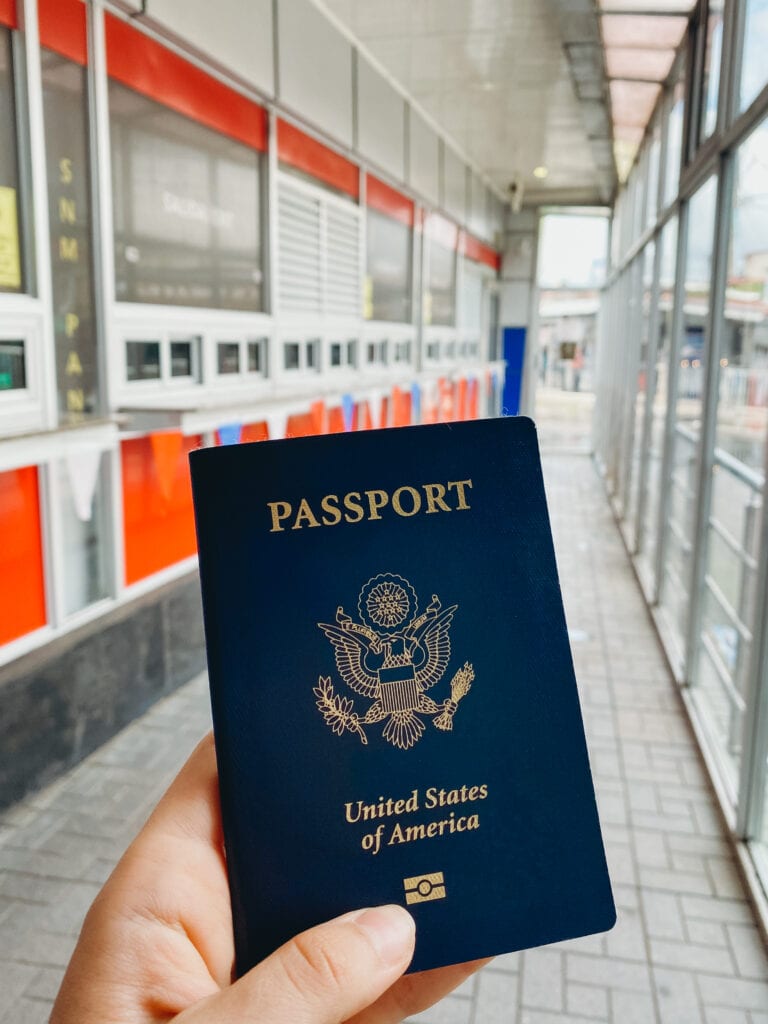
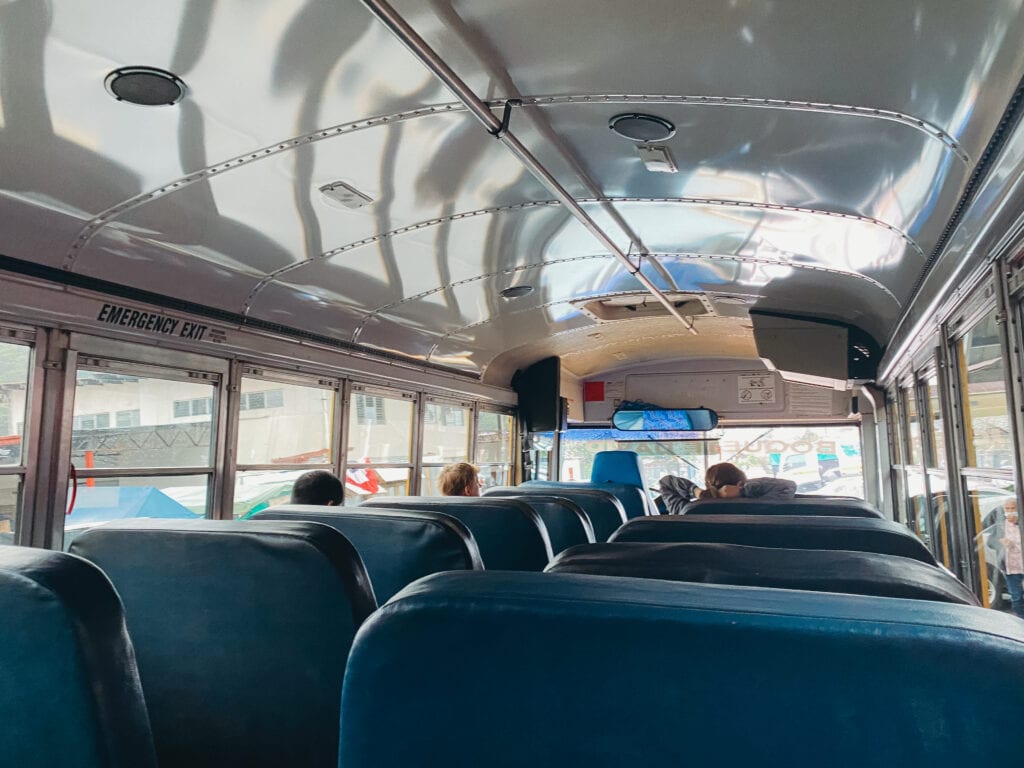
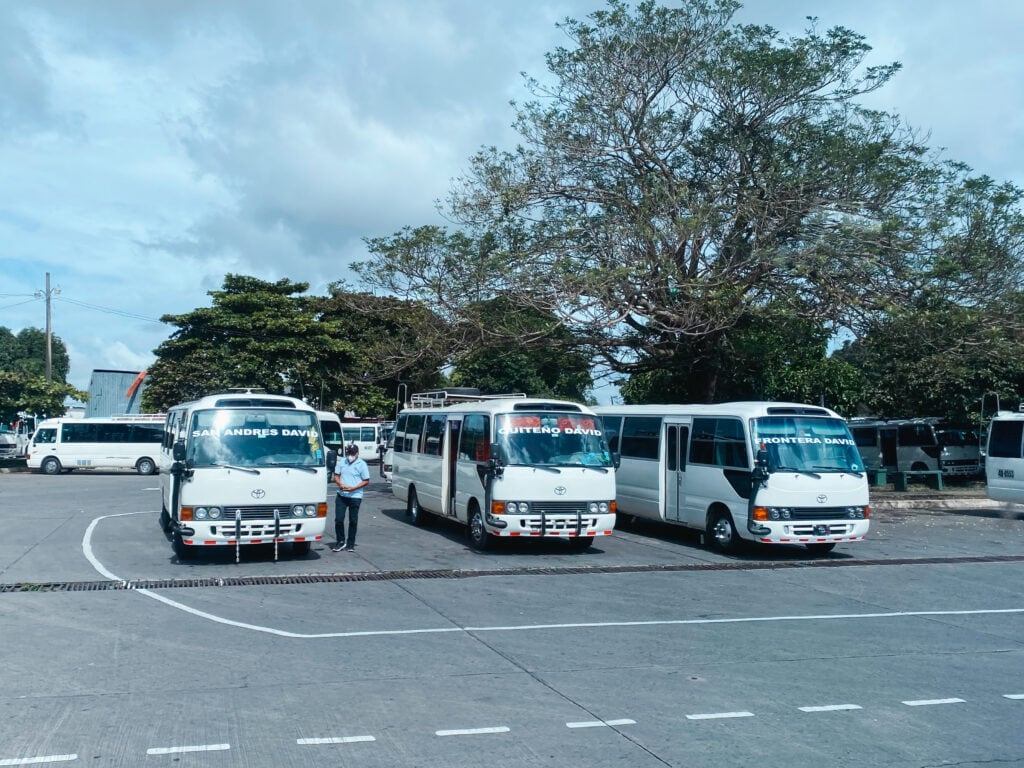
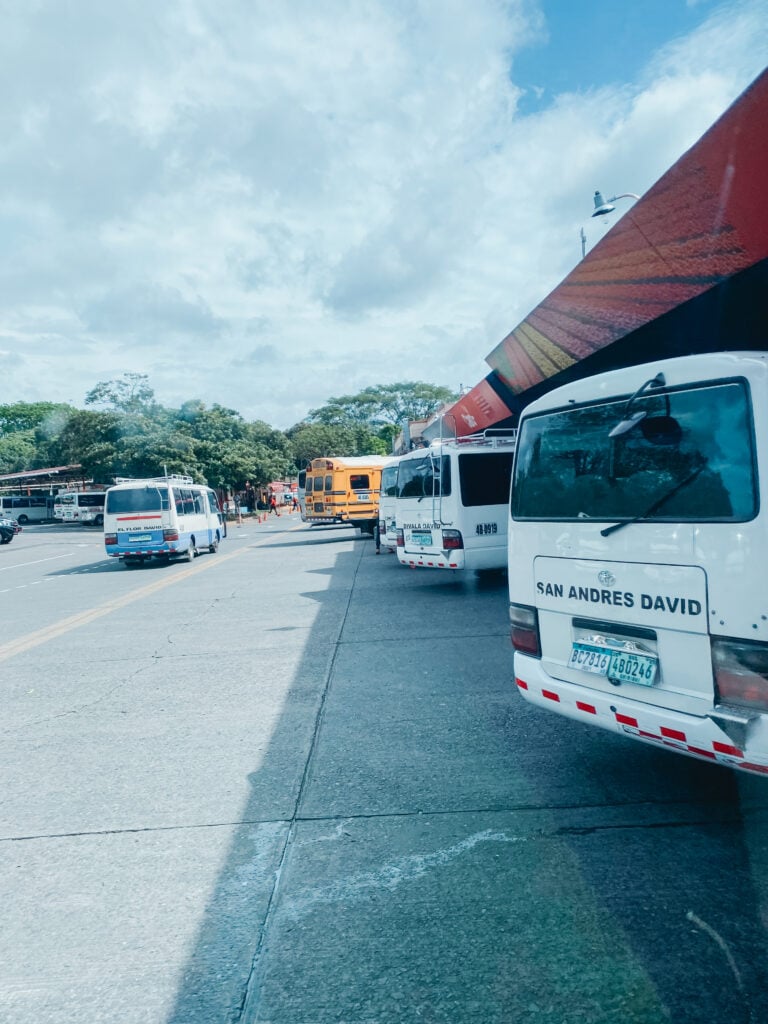
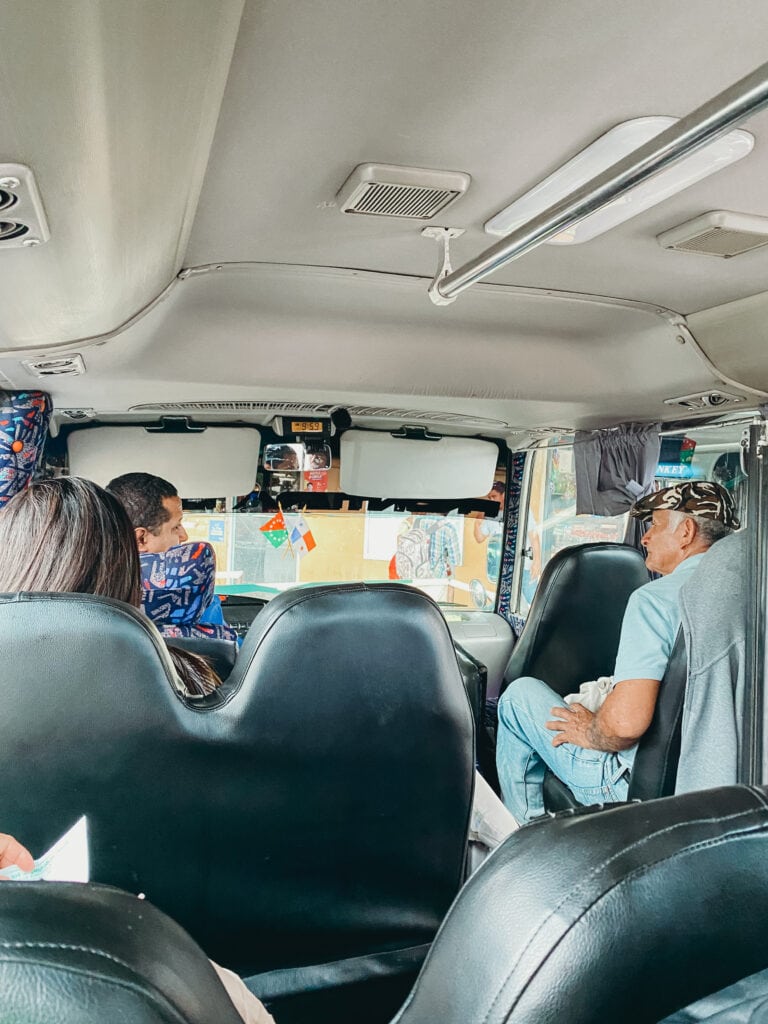
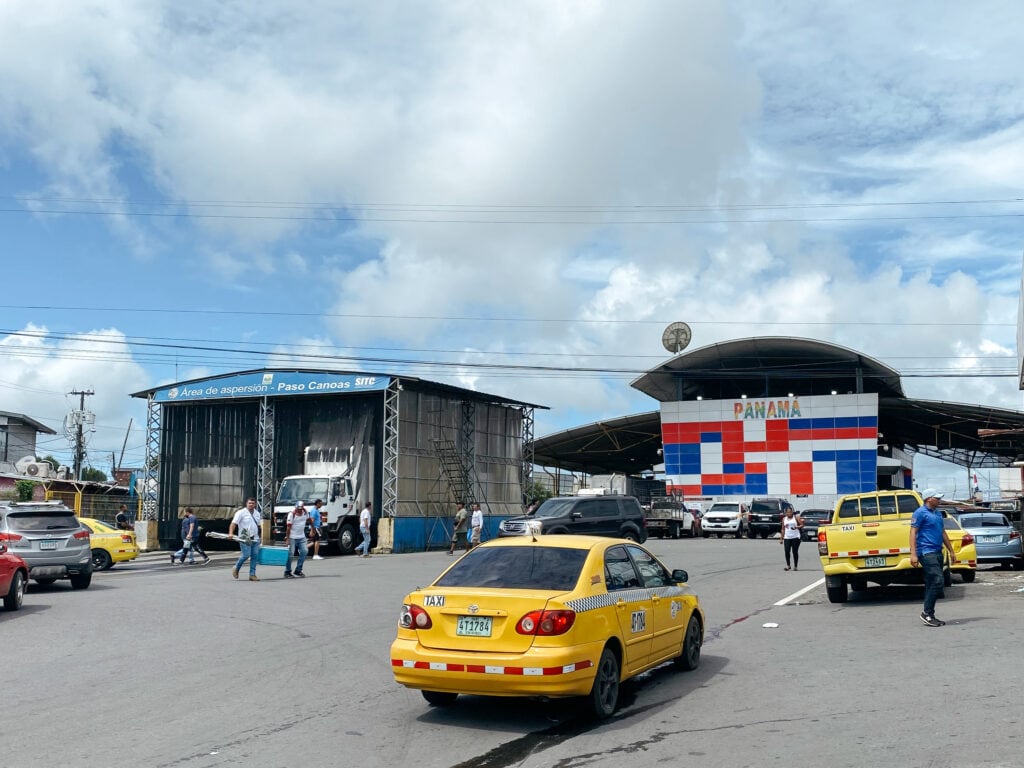
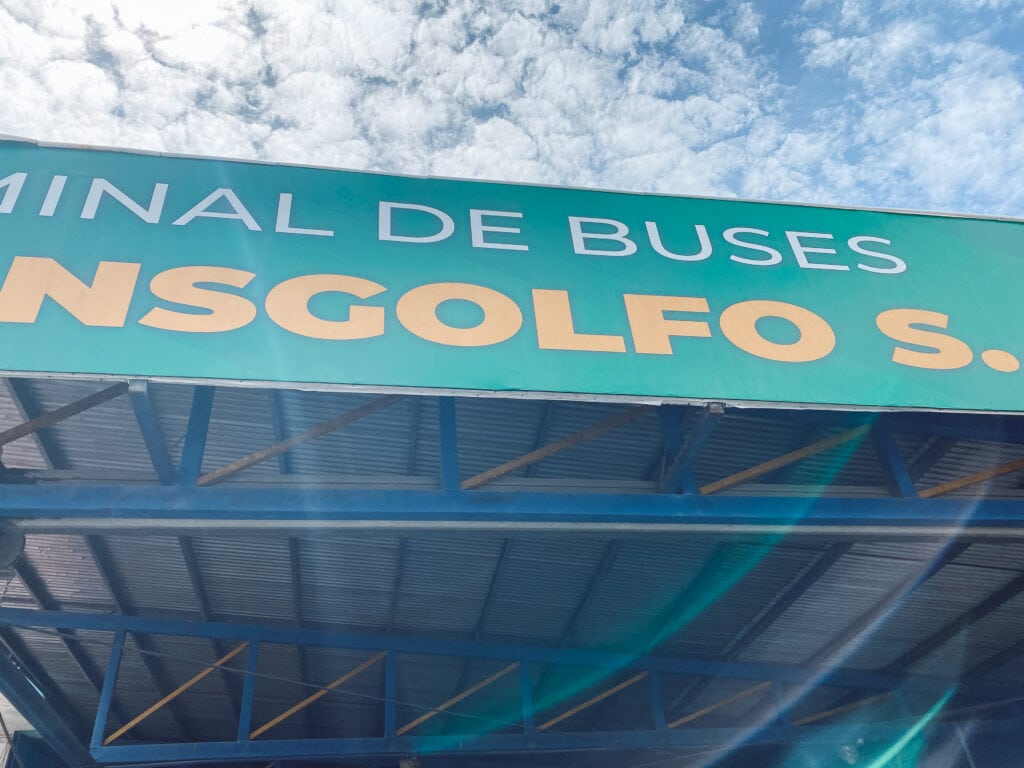
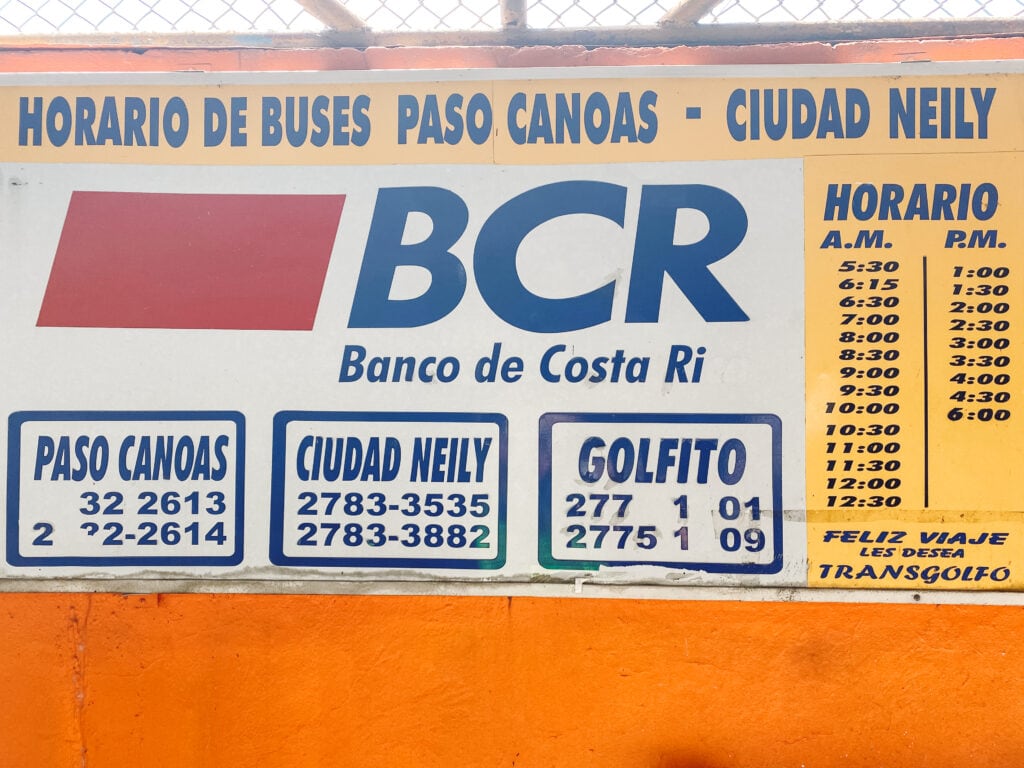
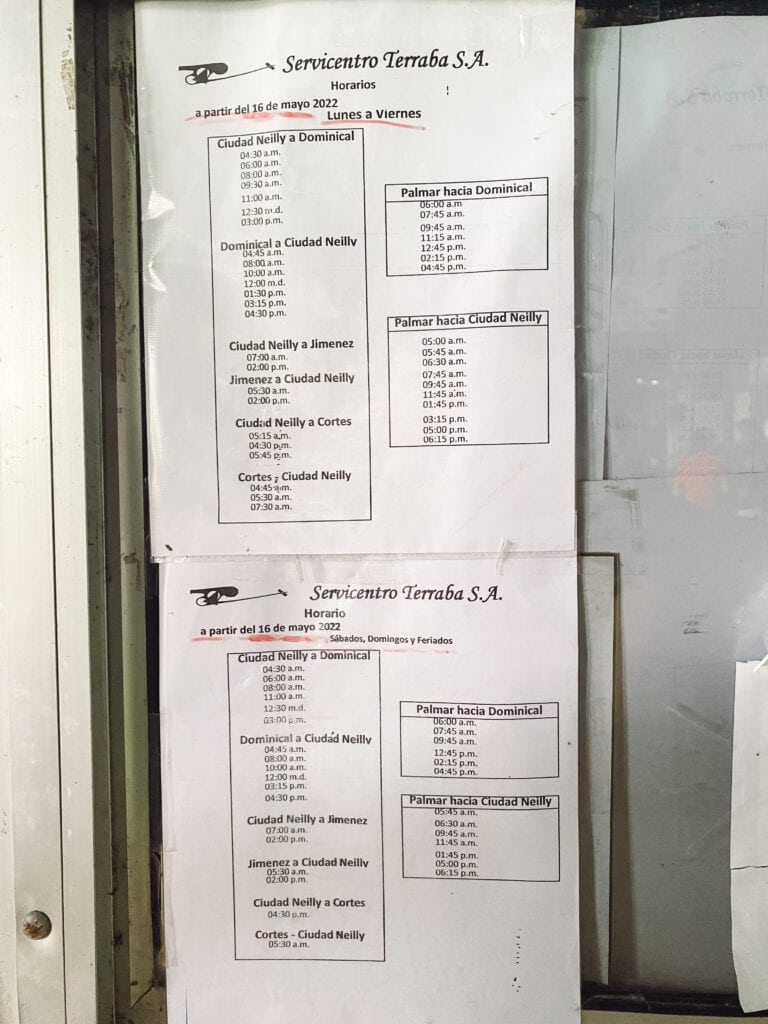
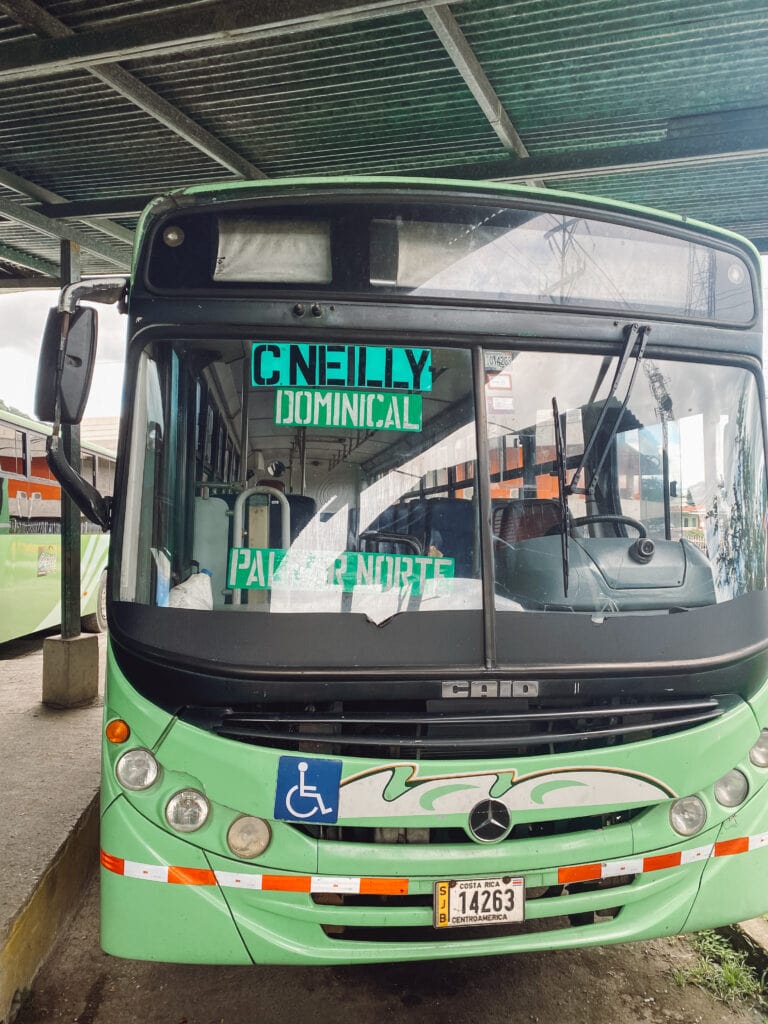
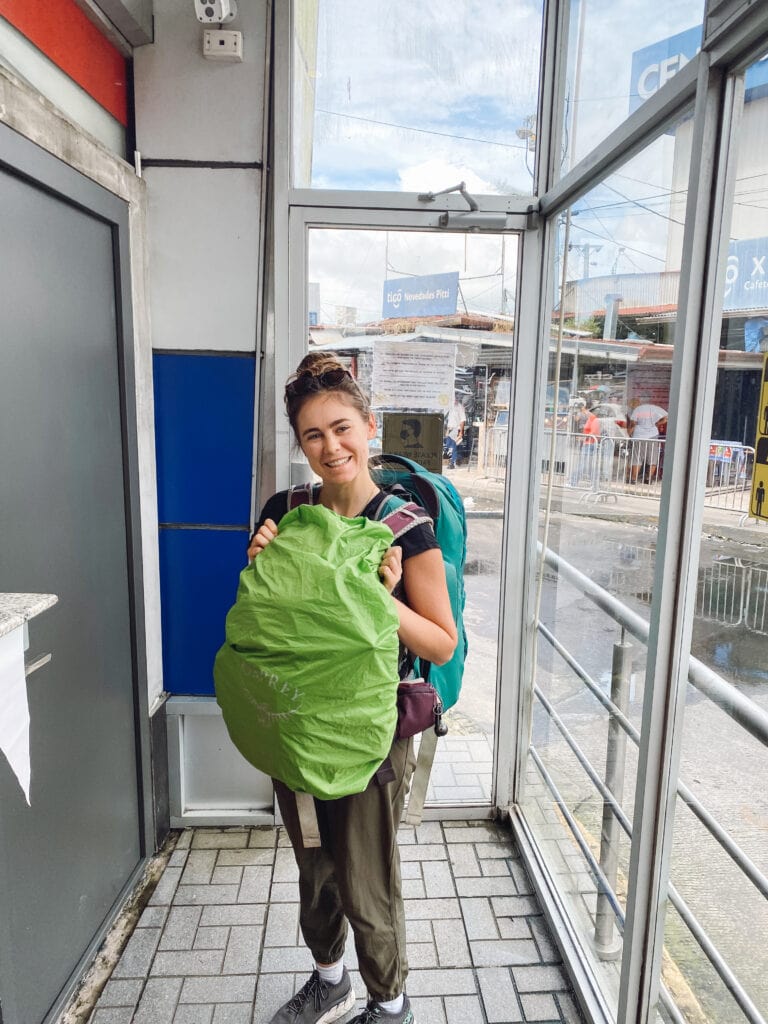
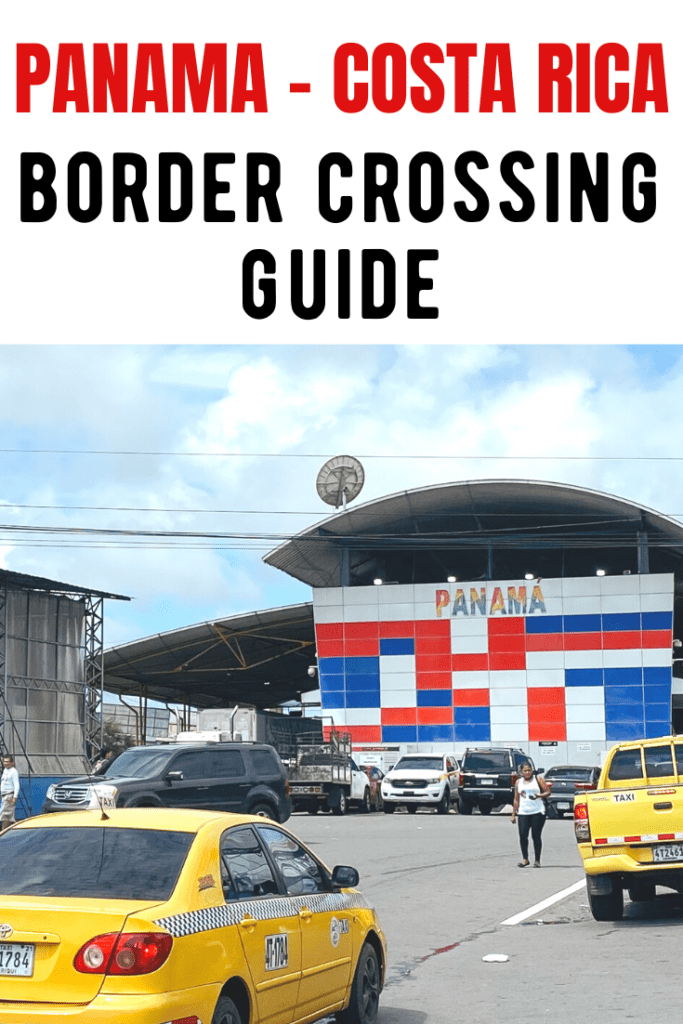
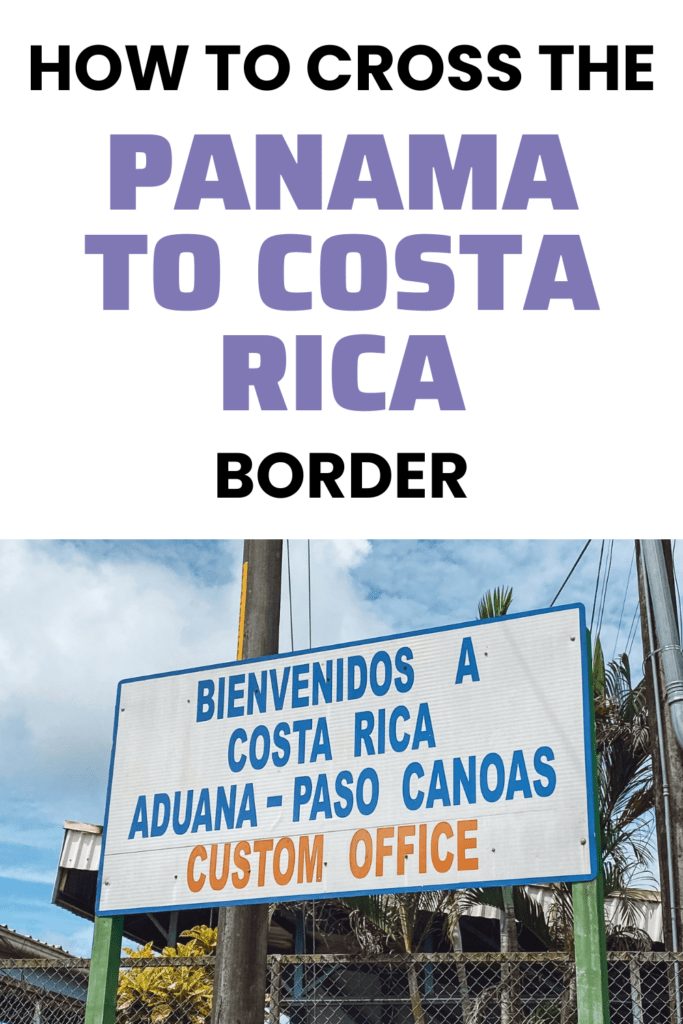
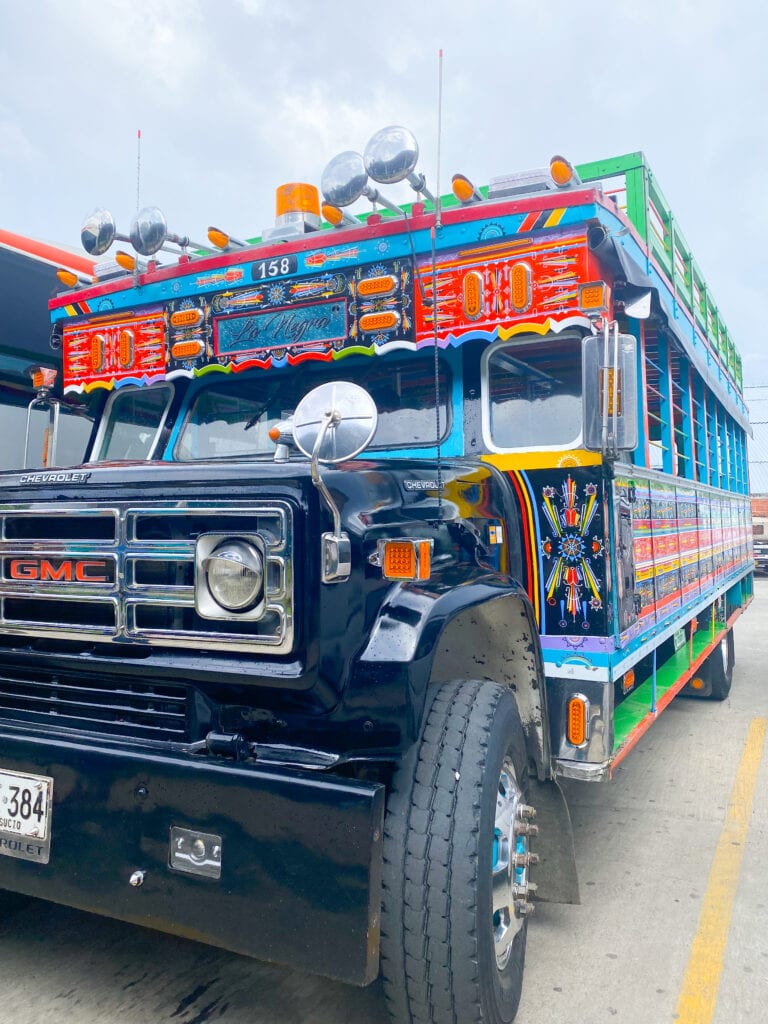
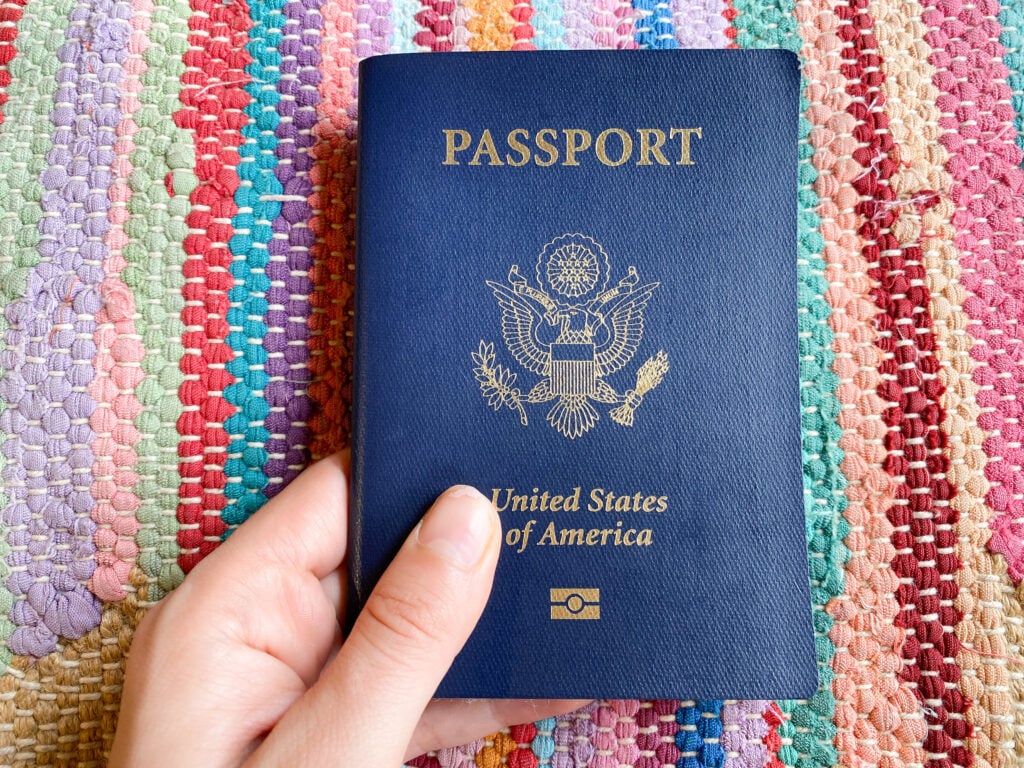
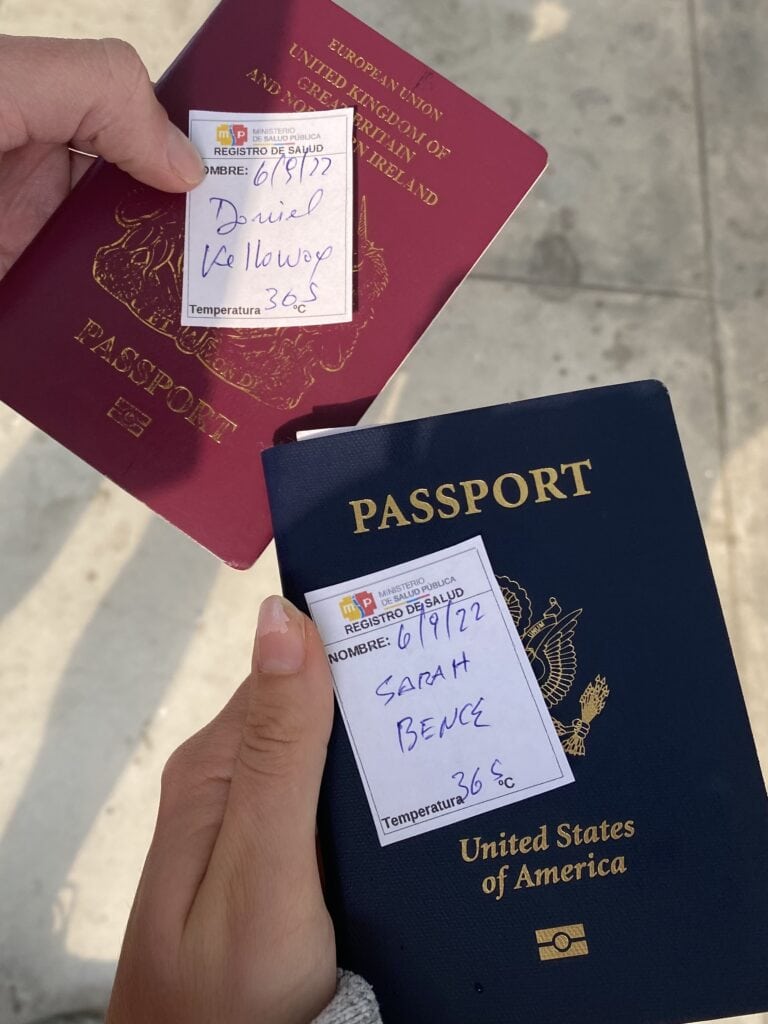
We crossed with our own car in 2022 and it was a huge headache. But I believe from what I have read that the border actually closes at night. So you have to cross during the day. Not sure if that is accurate.
Yes I think it’s a VERY different experience at this border if you cross by car because there is so much traffic. There is not nearly as much foot traffic so it goes really fast that way. I updated the post with the hours because you are right, this border is only open til 10pm weekdays or 8pm weekends!
I have been to that border a few times, but didn’t really pay attention to the bus terminal (for Cuidad Nelly).
Good to know, as the the Tracopa buses only run until about 4:30pm or so.
I also would like to point out the David to San Jose direct bus may not be a good idea. Because you will be waiting at the border for everyone else to get their their Panama exit and CR entry. That can take several hours depending on the border situation that day. Also the David bus and everyone on it gets is caged and searched before you can get back on the bus. Again that search can take a while. The buses originating from the border however, don’t have to deal with that and they run every 15 min or so.
So I recommend, get to the border as you did, then get your exit (panama), entry (CR) stamps, then buy your bus ticket for the next bus heading to San Jose or Nelly. That way you know when you are departing and not tied to anyone else. And while you wait for your bus departure, you can get a meal, explore the area, use the bathroom, drink couple of cold beers (on the Panamanian side) – there is a bar right by the window where you got your Panama exit stamp. Beer there is USD $1. This bar does not seem to have any sign, and is not easily recognizable, but it is only 10 steps from the Panama exit window. We asked someone where the bar was (not knowing we were standing right at the door). So he pointed it out to us “Open this door”.
Thanks Raul. Good to know that the direct buses involve a longer wait time. Although for some people, that may be worth it so as not to have to deal with the uncertainty of multiple buses.
Thank you so much for your article. That helped a lot! We actually took the Tracopa-Bus from David to San Jose just a couple of days ago and departed on the way in Uvita where the bus makes a regular stop at the company’s own bus station. It leaves at 8:30 (Panama Time) in David, so we could easily get a bus from Boquete (the collectivos start departing Boquete to David before 5am and need an hour to David, there is a schedule where they depart in Boquete) and just switch buses in David at the same terminal. The tracopa-bus is a big green/pink/orange one with a sign “David-San Jose”. You can purchase the ticket in advance at the counter or on the same day (the counter opened at approx. 8am, not 7:30am as advertised). It was a saturday, the bus was only 1/3 full. Big luggage was stored in the luggage compartments. One hour to the border, where we exited the bus directly in front of the Panama Imigration. That took maybe 10min (German Passport). Then we walked to the Costa Rican Immigration as instructed by our bus driver (5min). That took almost 60min (long waiting time) and even the bus driver was surprised that it took so long. fyi: The immigration officer only talks Spanish, but you can manage with little spanish knowledge (own profession, flight back, etc). Then we got our luggage and when everybody from our bus had their stamps, the luggage was inspected. And yes, in a “cage”, but the doors were open and everyone was free to leave any time. There were toilets nearby and an ATM. The inspection took not more then 5min with even more passengers than before because you can take the bus from the border as well. Our luggage wasn’t even inspected (we were last and had two big backpacks). We just had do answer short questions and put the luggage back in the bus who was waiting all the time next to the Costa Rican immigration. All together, we were there for approx. 2 hours but it was unusually long, as the bus driver said. To Uvita, it was a 2-2,5 hours drive. There you could eat something and next to the restaurant ist an information center (website: uvita.info) if you need other transportation (local bus, taxi, shuttle). Hope the information helps someone.
Thanks so much for sharing your trip report! I’m glad it went smoothly.
This is a gem of information! Thank you for posting this. Im also wondering if it is just as smooth on the return trip to David and can it be done in the same day?
Hi! We did not do that (we went onward to Dominical) but I think if you start early you would have time to go back to David in the same day – not La Fortuna though, that would be too far/too complicated. David should be ok. Good luck 🙂
Hi Sarah
Thank you so much for all these guides. I am backpacking from Panama up into Mexico and then the Sates.
Wanted to ask you about the Copa airlines hold on the ticket for 24 hours. Are you able to print this out or how do you show the immigration officer as proof for onward travel in the 24 hour window?
Thanks
We just used the ticket on our phones that was emailed to us! As you can imagine it is hard to access a printer haha
Any idea on how the current crisis of people fleeing from S.A. is affecting this border crossing ? Do they handle legitimate buses separately from the thousands on foot ? Or will you be waiting in line for hours as they deal with the people who are fleeing on foot ? Is it wise to cross at Rio Sereno instead ? Thanks